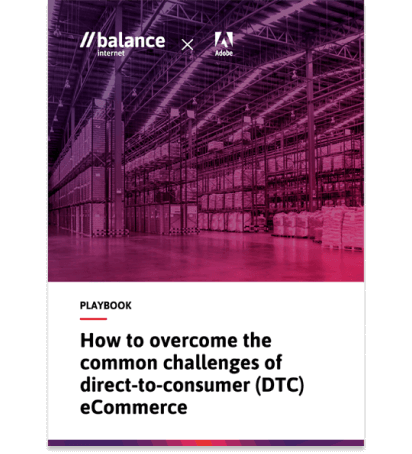Adobe Summit 2021 Recap —The Digital Experience Conference
Latest news / 12 May 2021


Relive the highlights of Adobe Summit 2021, get inspired and informed!
Adobe Summit—The Digital Experience Conference, April 27–29, 2021
Adobe Summit kicked off on April 27th, with the opening keynote. This year’s record-setting event welcomed 50,000-plus companies and has driven more than 20 million video views to date.
Attendees tuned in to the entirely virtual event to hear Adobe executives and other global business leaders share how exceptional, personalised customer experiences are the key to business growth today and in the future.
Shantanu Narayen, Chairman, President and CEO at Adobe, kicked off the keynote by reflecting on the past year. “We’ve gone from a world with digital to a digital-first world, and there’s no going back,” said Narayen. In the past year, eCommerce spend was $844 billion, but Adobe predicts 2022 will be the first trillion-dollar year in eCommerce.
This year’s Adobe Summit also replaced a number of regional summits and symposiums in Europe and the Asia Pacific. Regional leaders took the stage to address key challenges and opportunities impacting their customers and partners.
The Balance Internet team attended many sessions, from the 400+ training workshops, community activities and inspiring speakers on offer. Here’s our recap of key takeaways from this year’s virtual summit:
Magento Commerce is now Adobe Commerce
Adobe is now officially consolidating the branding of the licensed commerce product from Magento Commerce and Adobe Commerce Cloud to the single brand of Adobe Commerce.
As Adobe approached the third anniversary of its acquisition of Magento Commerce, they have made tremendous progress in accelerating the product roadmap and leveraging Adobe’s incredible scale to serve more customers across every industry.
After integrating the sales, marketing, and product teams within the Adobe Experience Cloud business unit and aligning partner and developer experience efforts, uniting their two brands under one commerce umbrella is the subsequent integration phase.
Magento Open Source branding and support remain unchanged. Adobe will continue to support the Magento Association and its charter of empowering the global Magento community to come together, learn, share, and collaborate on commerce challenges.
Traditional Commerce models are exploding
While Adobe is seeing continued growth in Direct-to-Consumer, B2B and subscriptions commerce models, around 60% of new Adobe customers actually fit within Hybrid Commerce.
The hybrid commerce model allows businesses to serve their B2C customers and B2B partners from a single integrated commerce platform, centralising digital trade for their brand. Companies are increasingly building unique and complex business models to gain competitive advantages and meet growing shopper expectations.
Focusing on the total experience is good for business
Focusing on customer experience isn’t a new idea. Still, the total experience is about improving experiences at the intersections of customers, employees and partners, at key business moments to achieve a transformational business outcome.
It’s about how businesses can optimise their customer engagement by seamlessly integrating all touchpoints with a central platform to provide an intelligent, consistent customer experience.
A report commissioned by Adobe demonstrates a focus on the total experience can produce up to 36% revenue growth rates, 1.7 times high customer retention, 1.6 times higher customer satisfaction and 1.5 times higher employee satisfaction.
Adobe’s vision for Commerce
Adobes commerce vision is that across every industry, people aren’t just buying products; they are buying an experience. Adobe Commerce wants to provide the best eCommerce platform that is able to evolve with their customers and elevate the brand experience, not limit it. The Adobe roadmap is centred around the vision that; “In a future where customer experience is paramount, and all commerce is digital commerce, Adobe enables the world’s best brands to deliver the worlds best commerce experiences.”
2020 Magento Commerce highlights
In support of creating superior customer experiences, Adobe introduced:
- Page builder content templates and PWA Integration
- Extended GraphQL and PWA coverage
- Adobe Stock integration
- Seller assisted shopping
In support of multi-channel commerce, Adobe introduced:
- B2B order approval workflows and buyer tools
- B2B buyer experience improvements
- B2B seller experience improvements
- In-store pickup in Commerce
In support of Intelligent commerce, Adobe introduced:
- Dynamic product recommendations powered by Adobe Sensei
- New Magento Business Intelligence dashboard and heat maps
In support of frictionless platform and infrastructure, Adobe introduced:
- Magento cloud on Azure
- Improved cloud development tools
- Released an enhanced Magento security scan tool
- Introduced two new site health tools
Market validation of note:
- Adobe is the #1 top commerce provider to IR 1000 for the 8th time
- Commerce leader across Gartner and Forrester
- 73% Y/Y growth in merchant holiday traffic
- 450,000 developers in the Magento ecosystem
2021 Roadmap
Modern and extensible headless commerce is a big focus for Adobe in 2021. Headless enables businesses to completely decouple the experience layer from the underlying commerce services, allowing merchants to have greater flexibility with their content authoring solutions and the ability to make decisions about the frontend and backend independently. Adobe is also making a significant improvement to the PWA developer environment, making it faster and easier to innovate storefront experiences.
Live Search powered by Adobe Sensei
Adobe will continue its push to leverage artificial intelligence to understand and act on visitors behaviour to personalise the shopping experience and optimise business performance.
Live search will be introduced in 2021, a brand new SaaS-based site search service exclusively for Commerce merchants, again leveraging the power of Adobe Sensei. It will deliver lightning-fast and hyper-relevant search results right out of the box. The offering includes instant search results, smart filters, category selection and leverages dynamic conversion rates data to influence displayed results.
Merchants will have complete control over the search results experience as well, with a full-featured rules engine available to set up and personalise the experience for customers. An advanced analytics dashboard will provide real-time search use results to business teams to help further understand shopper intent.
Adobe product recommendations are also the target of future improvements. Visual AI for product recommendations will see a new algorithm use image analysis to match and display visually similar items dynamically. Adobe will use the same AI that is included in Adobe’s creative suite.
B2B Enhancements
In 2021 Adobe will continue to help B2B merchants delight their shoppers with superior experiences and dynamic capabilities they expect as consumers while supporting the complex requirements of the business buyer.
2020 was a big year for new commerce capabilities rolled out to B2B merchants. Continuing on the theme of delivering fantastic customer experiences, Adobe will roll out complete GraphQL API coverage for all B2B specific commerce features, with roughly 50% now already available.
Two notable changes for online transactions for B2B merchants will be introduced in Q1. They’ve extended purchase approval capabilities to include more third-party payment methods and introduced an Adobe sign integration to digitise the end to end process with e-signatures.
From 2.4.2, merchants will see significant performance improvements for businesses with large product catalogues, with updates to key indexing processes allowing up to 10x more efficiency.
Later this year B2B merchants will see scaling improvements with price books and orders with a large number of line items.
GraphQL enabling headless
Adobe will accelerate time to value and lower the total cost of ownership while delivering experiences that drive business results by expanding the GraphQL coverage and capabilities of the platform.
The Adobe teams are working together with a vision to create a fully unified storefront. To support this vision a new standalone GraphQL layer will be introduced to replace the existing storefront microservices. These changes will deliver significant improvements over the current GraphQL implementation, reducing response time for users. For those who have already adopted the PWA UI, minimal effort will be required to integrate.
The updated GraphQL layer will allow direct integration with Adobe experience cloud services via the AEM commerce integration framework, enabling greater flexibility over the user experience for content and marketing specialists.
Magento Payments
Adobe will seek to turn payments into a revenue driver, not simply a cost of doing business, with a fully integrated payment solution that optimises acceptance and operational efficiency.
To be released in late 2021, Magento payments will offer a range of local payment methods, all available in a single integration. New merchants will have the option of enabling these methods directly from Magento without negotiating the account setup before implementation. Merchants will be able to gain powerful insights with robust centralised reporting of the end-to-end transaction lifecycle.
Adobe Sneaks 2021 #catchycontent
Adobe Summit on-demand
Adobe Summit was a unique virtual event with more than 400 sessions, training workshops, community activities and hundreds of inspiring speakers. You can still soak up incredible insights and experience sessions on demand. Browse on demand.
The Adobe Summit is a wrap, but the innovation is just getting started
We hope you’ve enjoyed this snapshot of highlights from the Adobe Summit. To delve deeper into these highlights and more, reach out to the team at Balance Internet to talk about how the 2021 platform enhancements could support your digital commerce vision.



